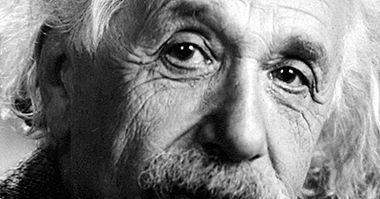How to quote a book with APA regulations, in 9 steps
Quoting a sentence, a text, a whole paragraph ... is that task that has always led to students and authors of books and articles that are dedicated especially to the area of research and / or teaching. Plagiarism is often reported or scientific papers are suspended for having used the format incorrectly when quoting.
There are different styles and regulations to quote, but In this article we will dedicate ourselves exclusively to the APA format to quote books.
- Related article: "How to quote a web page with APA regulations, in 4 steps"
What is it to quote?
An appointment is that phrase or expression that is extracted directly from another work to contextualize an idea or theme within a new book or research assignment. In other words, cite reinforces, contextualizes and serves as support to clarify an idea that wants to expose.
The functions of quoting are several and this will depend on the use that each author wants to make of them. They can be used to introduce a debate, to expose the affinity with a particular author, to extend a text, to clarify an idea or simply to give a more consistent definition.
- Maybe you're interested: "Psychology gives you 6 tips to write better"
9 steps to quote with the APA regulation
In this article we will expose the steps to follow to quote a book correctly in APA format since, depending on the type of information that you want to add to a new job, we can use one style or another within the same regulation (textual or non-textual).
1. Gather information
When preparing a new work, it is very important to extract basic and precise information from the author or book that you want to include, since this will enrich our thesis when it comes to clarifying certain information. It is important go whenever possible to primary sources .
2. Take into account the work and the author
This step is of utmost importance since a bad choice of the book or author can determine a misinterpretation of the theme or idea that you want to reach the reader. First of all the author must have some recognition, be a specialist in the subject and whose ideas are reliable. If what you try to convey are the ideas of the author in themselves (regardless of their quality), you have to focus on the words of that person, and not the interpretation that others have made of them.
3. Textual quotation
In this case we must make an exact copy of the fragment that we want to extract , transcribing this text with fidelity and word by word. In this way, the copied paragraph is enclosed in quotation marks, and according to APA regulations, the name of the author or authors, the year of publication and the page from which the text is extracted must be in parentheses. For example:
"The Orient was almost a European invention, and since antiquity, it had been the scene of romances, exotic beings, memories and unforgettable landscapes and extraordinary experiences" (Edward Said, 1978, p.19).
4. Textual quotation emphasizing on the author
The author in question is mentioned first, the year is bracketed and finally the page is written directly behind the copied fragment. Example of the citation:
Edward Said (2002) wrote that "The East that I describe in my book as created in a certain way by the conquerors, administrators, academics, travelers, artists, novelists and British and French poets is always something that is <>" (p.10). )
5. Extensive textual quotation
In this case it is a text with more than 40 words and is written without quotation marks in a separate paragraph with indentation of 5 spaces on the left , citing the author in the first place, putting the year in parentheses and indicating the page at the end of the text. Here is an example:
For Sigmund Freud (1930):
The psychoanalysis founded by him could be considered from a threefold perspective: as a therapeutic method, as a psychic theory and as a method of study of general application, susceptible then of devoting oneself to the analysis of the most varied cultural productions, giving rise to what he he himself called "applied psychoanalysis". (p.9)6. Specific non-textual appointment
Quoting non-textually refers to making a brief summary of a part of the work or source consulted, without verbatim copying the idea you want to expose. Example:
Sigmund Freud (1930) prefers to concentrate on the path to happiness ... (p.29)
7. Generic indirect appointment
It is necessary to mention only the author and the year, without the need to add the page. It is written without quotation marks:
Karl Marx (1848) refers to capital as ...
8. Cite several authors
When they are two authors it is easy. Both surnames and the year are written: Marx and Engels (1855).When there are three or more authors, if they are cited for the first time, it is necessary to include the surnames of all the authors and the year. When they are cited a second time, only the last name of the first author is inscribed and an "et al" is added : Varoufakis et. al (1999).
9. Bibliography
Finally, we find ourselves in the final section when quoting authors of a book. In the last section of the new work or work that has been prepared, all the bibliographic references of the quotes used during the new text will be added alphabetically:
Karl M. and Friedrich E. (1848). The Communist Manifesto. Madrid: Editorial Alliance.
Said, E. (1978). Orientalism. Barcelona: Random House Mondadori.



















